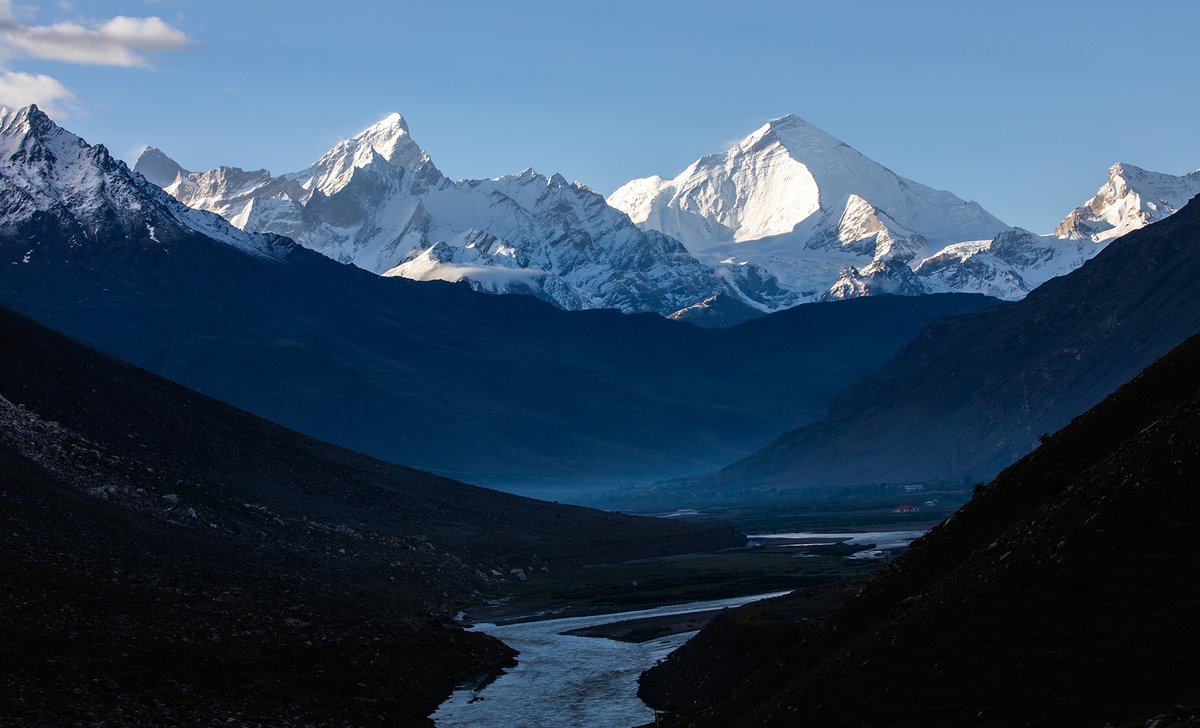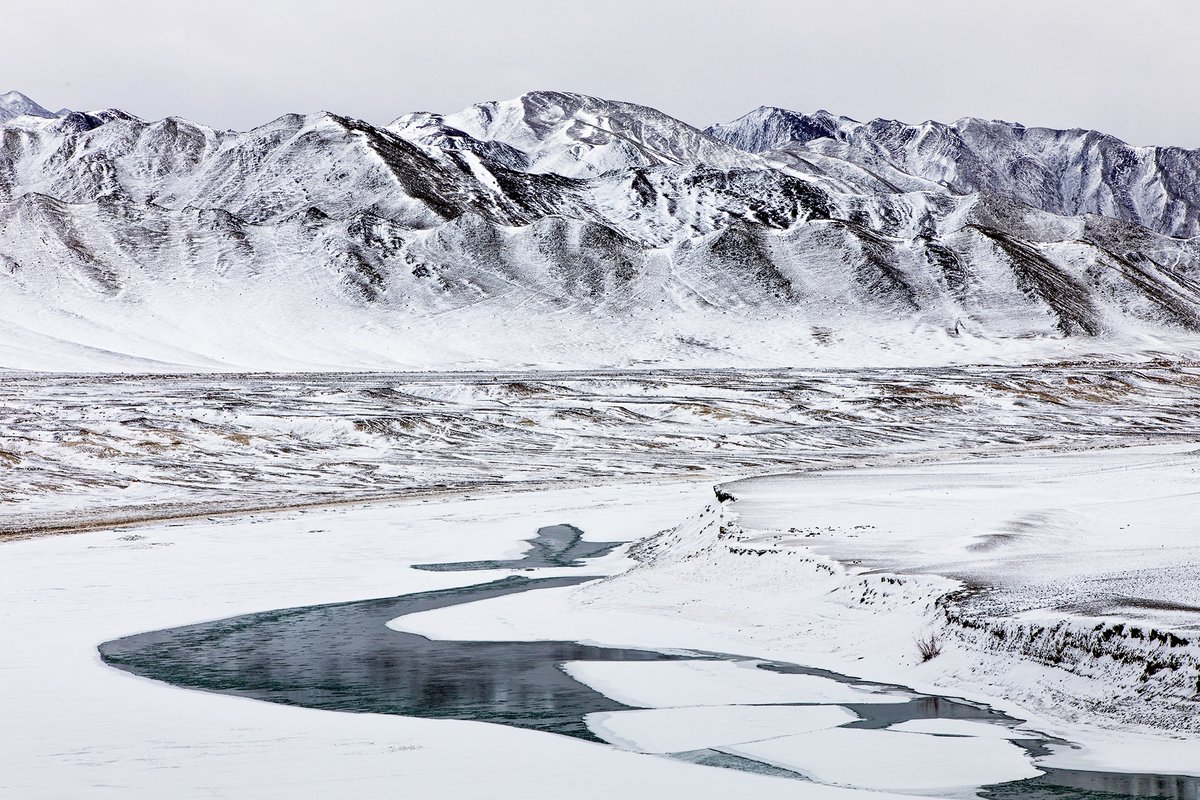[Thread] If you look closely, you will find that South East Asia is an extraordinary region of immense natural resplendence and cultural designs. This is a thread of visuals from Cambodia and Myanmar.
Image: an incredible morning over the expanse of pagodas in Bagan, Myanmar.
Image: an incredible morning over the expanse of pagodas in Bagan, Myanmar.

I have made multiple journeys in Myanmar, and every single time I have come back amazed at the aesthetics and simplicity of human designs.
Image: an evening over a bridge in central Myanmar. (3/N)
Image: an evening over a bridge in central Myanmar. (3/N)

Myanmar is obsessed to two things: gold and pagoda. At Yangon's Shwedagon Pagoda, the two obsessions come together. (4/n) 

Many of Myanmar's cultural spaces are much older than what we see in Cambodia. Some of its pagoda complexes are more than a thousand years old and continue to be vital spaces for its people to connect to their roots. 

In the ancient city of Bagan, if you were to visit a pagoda a day, you may have to plan for long term relocation. 9/n 

If you ever need a location to write a fairytale-like story, you perhaps need to look no further than this land where pagodas tend to reach for the orange-hued skies. 

No matter how far you go in Myanmar, you will always find a complex of pagodas. In the same complex, some may be recent, some of them may be decades old and some built centuries ago. 

Across South-East Asia, you will usually see people very devoted to their practices and belief systems. 

Naturally, you will also frequently encounter monasteries and monks as you travel across the region. 

In many of these places, monks and nuns must seek alms everyday. In Myanmar, if you go for a walk in the morning, you are very likely to see a line of monks/nuns walking through the neighbourhood from house to house seeking alms. Usually, households contribute generously. 

Monasteries in Myanmar are usually large open spaces where everyone's welcome. In 2012-13 when Myanmar was just emerging out from several decades of military rule, the country saw such a surge of tourists that there were not enough accommodations to cater to them... 

many tourists found refuge in monasteries when they had nowhere else to go!
Often, monasteries accommodated children from some faraway strife ridden places and gave them shelter.
Often, monasteries accommodated children from some faraway strife ridden places and gave them shelter.

While they all have a common goal and share many similarities, the monasteries in Cambodia appear much distinct in their rituals and practices. 18/n 

I had a chance to converse with a monk in this monastery, who happened to have travelled through India. He was of the opinion that rituals, practices and general cultural outlook of people in India were similar to his country. 

This lady had come to the monastery seeking relief from recurring bad dreams that she was having. She was taken through what was best translated to me as 'water ritual'. Often, English is not a language that yields well cultural practices of the East. 

Cambodia is mostly rural. Phnom Penh is the only large city in the country. Even the second largest city is no more than a small town. Rice is primary crop across the country. Fishing is another common occupation, especially around the large Tonle Sap lake. 

I spent a good amount of time travelling through Cambodian countryside. I had great help from some local people, due to which I was able to see everyday life in Cambodia up-close. 

Public transport is almost non-existent anywhere in the country, except for long distance and inter-city travel. It's almost mandatory for anyone with an occupation to have their own means of transport, usually a two-wheeler. (25/n) 



It's common to see small businesspersons and vendors moving around the countryside in two-wheelers with goods that they are selling or buying. (26/n) 

Fishing is an important occupation for much of country's population. The large Tonle Sap lake sustains a large number of fishing communities. Several communities have floating villages on houseboats or live on houses on stilts right in the middle of the water! 

This is a floating village in the southern edge of Tonle Sap lake, photographed in September. If you arrive two months later when the water levels will be down, the entire village would have floated away to deeper parts of the town and you would see none of these houses! 

Of course, when you live in a floating village, a trip to your hangout with friends will be possible only with a personal transportation. 

Markets in Myanmar appear calmer and more organized in comparison. Almost every market has a section for flower sellers that really catches your attention. 

These flowers usually go to the elaborately decorated altars in the home. Fresh flowers everyday, day after day. 

And then there are some markets that can only be accessed by a boat. The charm of this water world is unbearably sweet. The joy of being here was unprecedented for me. Moment after moment, I would wonder, how can any place and its people be this beautiful! (33/n) 

I must tell you about this extraordinary life on the lakes, where villages have existed in the middle of water. Traditionally, fishing is their primary means of living. Over time this is slowly being supplemented or substituted by growing tomatoes on water. 

The Intha fishermen of Inle have mastered the unusual art of rowing with their leg! This allows them to stand up and row, which gives them better visibility, and cast their nets as they continue rowing. 

These are tomato fields in the lake! The lady tending to the plants is on a boat and not on the ground. Obviously, I was sitting on a boat moving through as well. 



In here, I had a chance to witness an extraordinary festivity and celebration: a procession that takes Buddha on a tour of villages around the lake. The festival lasts two weeks, as the lord rests in every village for a day before returning to his abode in Phaung Da Oo pagoda. 

Dozens of superbly decorated boats lead the procession of Buddha in his golden boat accompanied by people on hundreds of boats watching the jamboree move forward, as the early morning sun warms up the ocean-blue waters of the lake and disperses the crisp morning air. 

These parts of Myanmar are perfectly tropical in many sense. You see abundance of water everywhere. There's greenery everywhere year round. Life moves in a relatively slow pace. 

One day, I hiked up the verdant hills overlooking the lake and spent a day staying in a remote village inhabited by Pao community. 40/n 

The path took me through gently rolling hills, post-monsoon florescence, sparse jungles, bamboo groves and slopes covered with tall grass. The landscape is so beautiful, every recollection of it leaves me with a yearning. 

Pao villages in the hills are amazingly self sustained. When I was there, I noticed a marked absence of the government in the region. Pao people built their own roads & made their own schools. They even had community micro-hydels attached to waterfalls that powered the villages! 

I was hosted here by an affectionate lady, who served as English teacher in the village's primary school. 

Let me introduce to tea-houses, an essential part of Myanmar's public life. In any corner of a town or city, you will never fail to find a small corner where a food vendor has setup a few tiny seats. They mostly serve tea and a limited menu of snacks and meals. 

The tea houses are the go-to places to spend time. Friends meet up, people just hang out by themselves or sit down to conduct business. They come in all sizes, like a spacious and organized place or this bunch of little seats you see in Yangon Central train station. 



Speaking of train stations and trains, they can be pretty colourful and happening; especially the suburban train around Yangon City. 

Some of these suburban stations are not exactly stations, but markets. You step out of the train and find yourself in the middle of a busy fair. 



Both these countries - Cambodia and Myanmar suffer a tumultuous past and current. Yet, during all my journeys, I have have always seen shine in the eyes and warmth on the faces of people. 



As countries that share a thread of history and culture with us, I wish for these countries and their people to prosper and shine.
Image: Bayon Temple, one of the well-known temples in Angkor-Wat temple complex. 49/50
Image: Bayon Temple, one of the well-known temples in Angkor-Wat temple complex. 49/50

I conclude this thread with an image of nuns prostrating in front of a pagoda, a seeming act of surrender that is part of everyday life of the devout people in these countries.
Thank you for staying with me through this long thread! 🙏
50/50
Thank you for staying with me through this long thread! 🙏
50/50

• • •
Missing some Tweet in this thread? You can try to
force a refresh





























